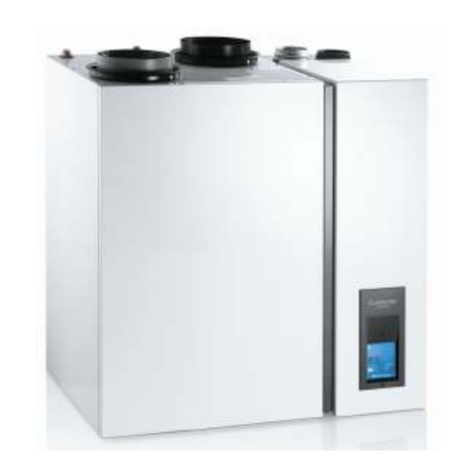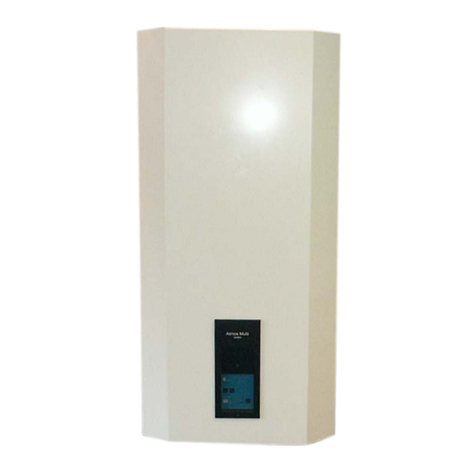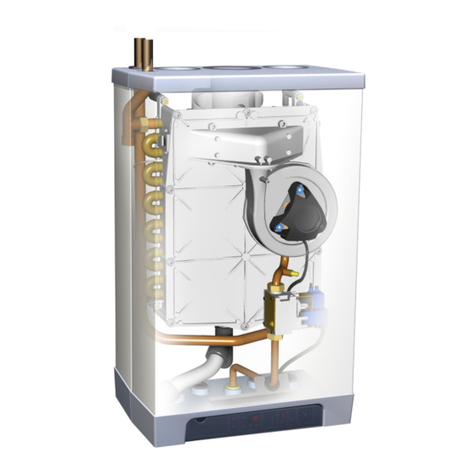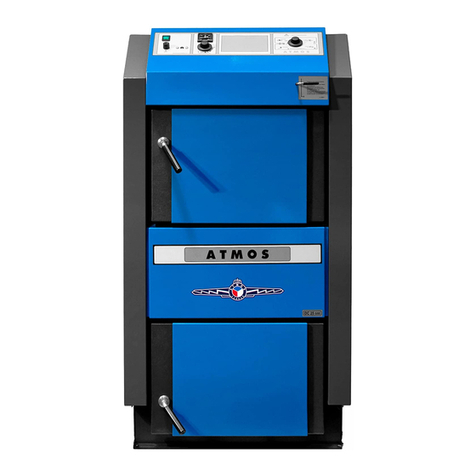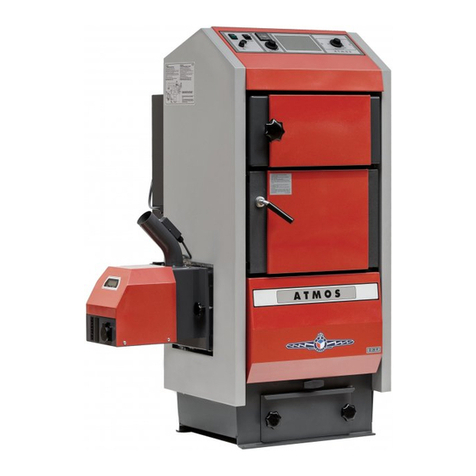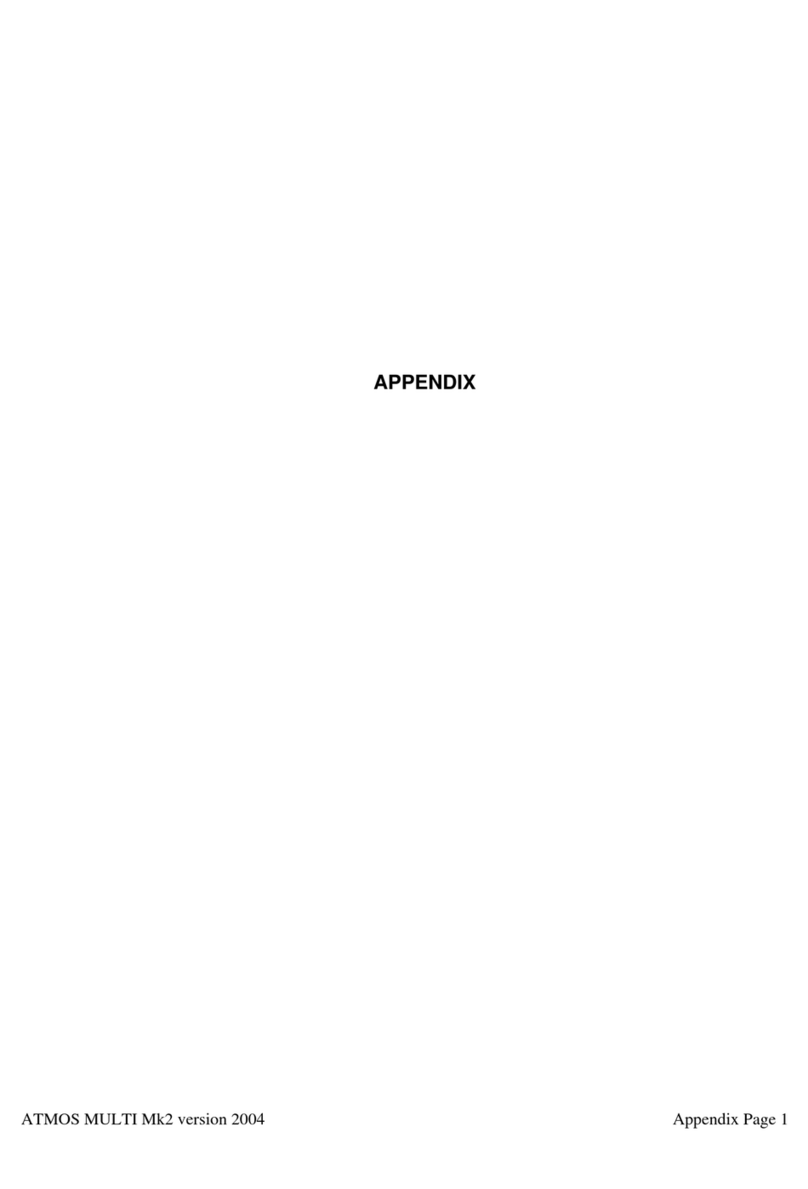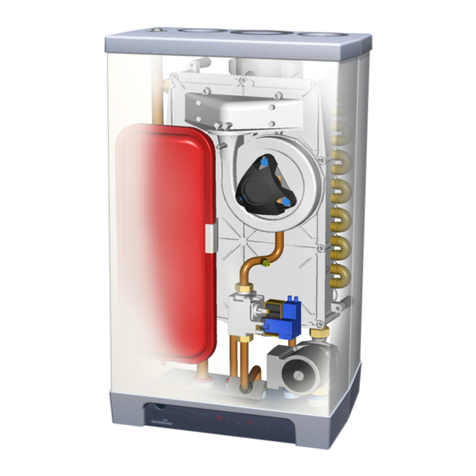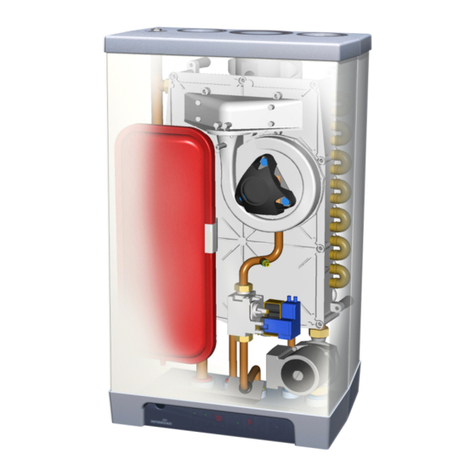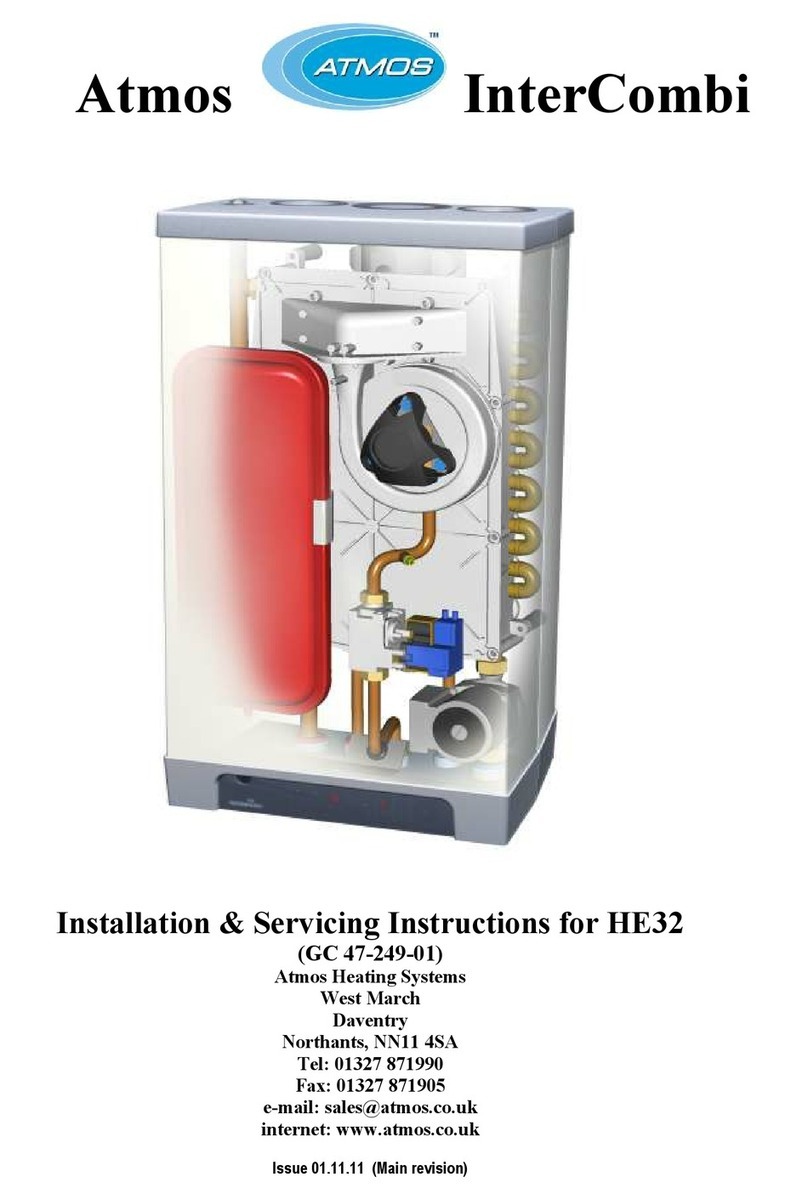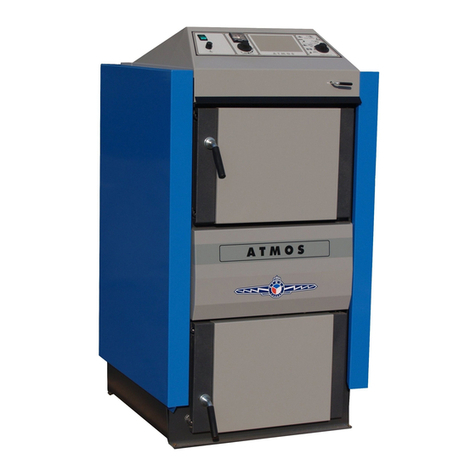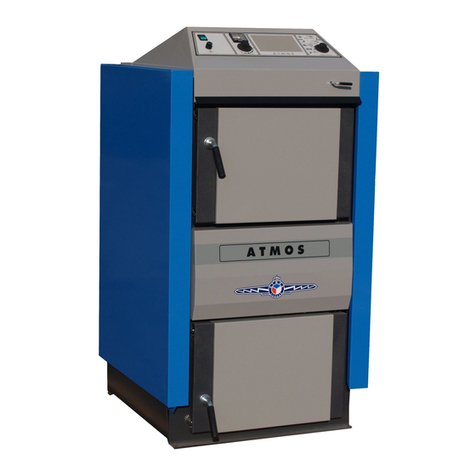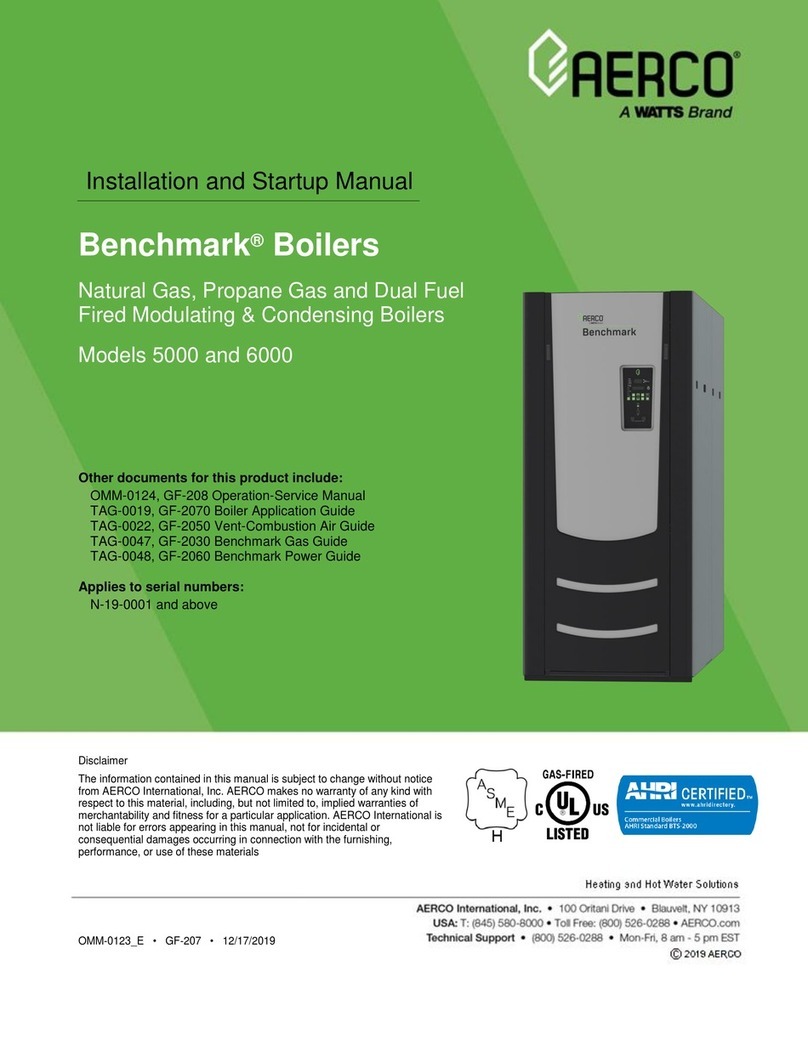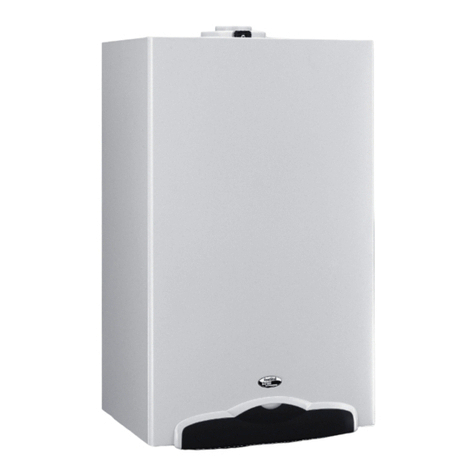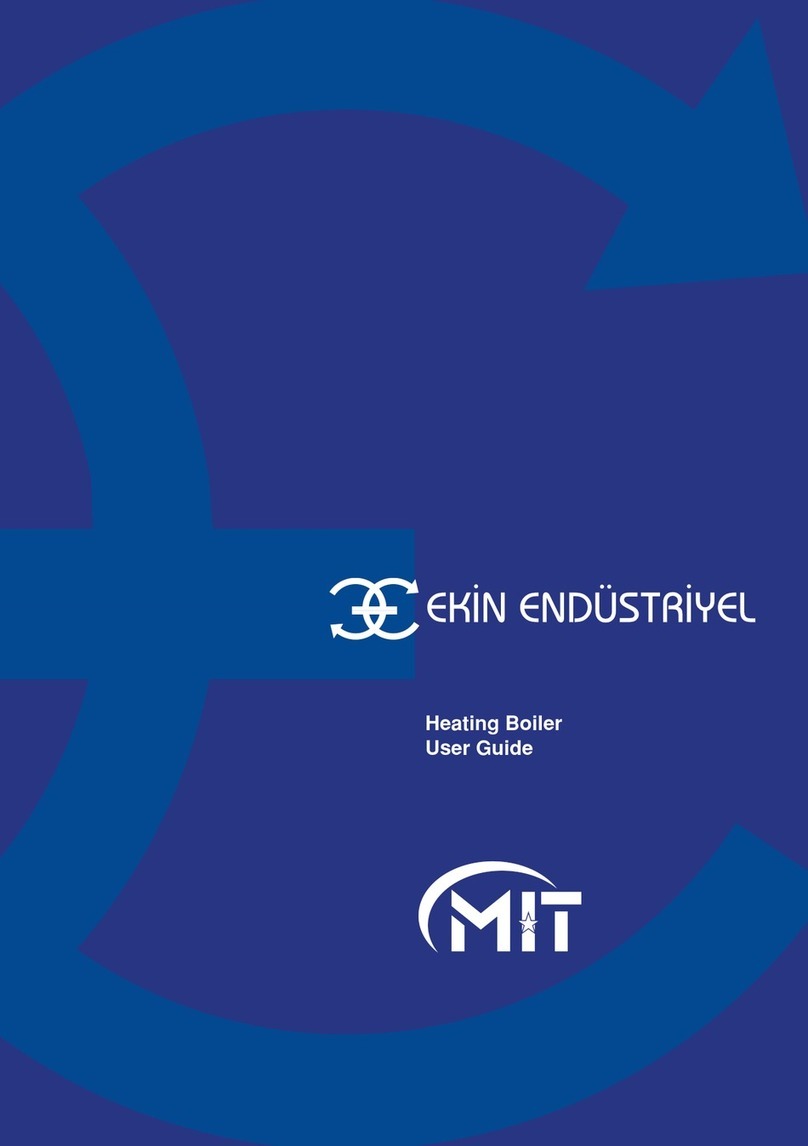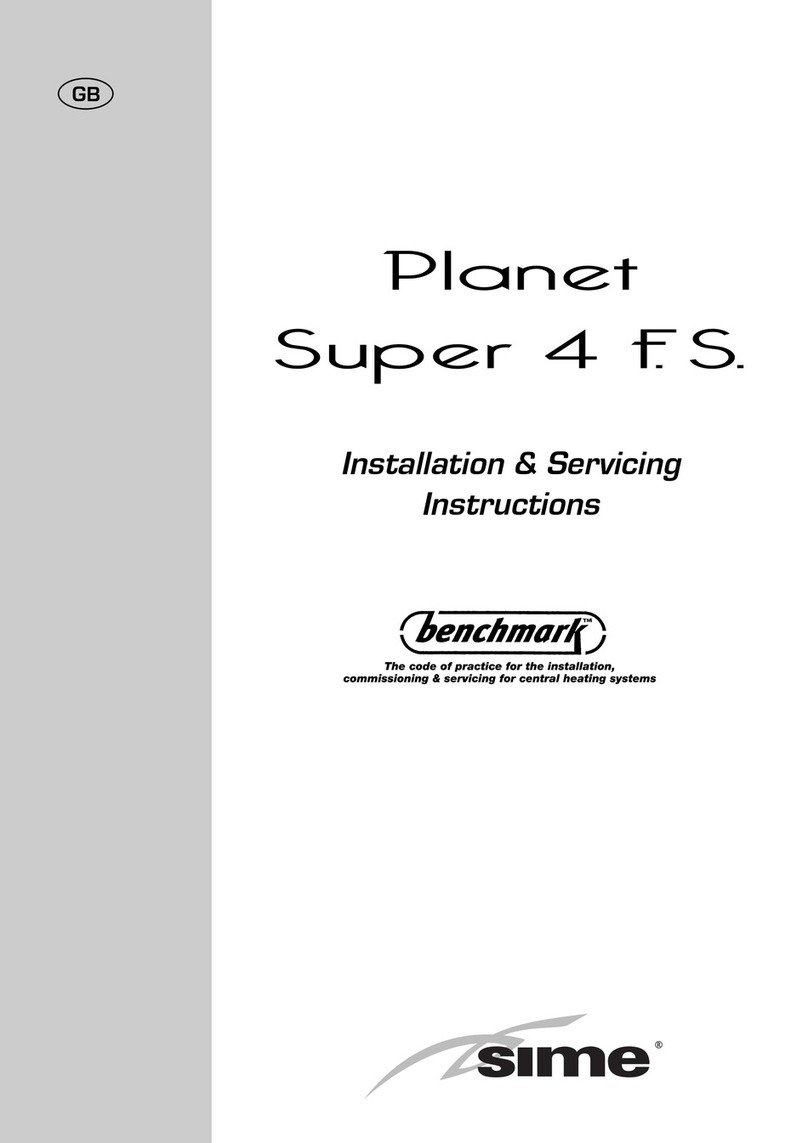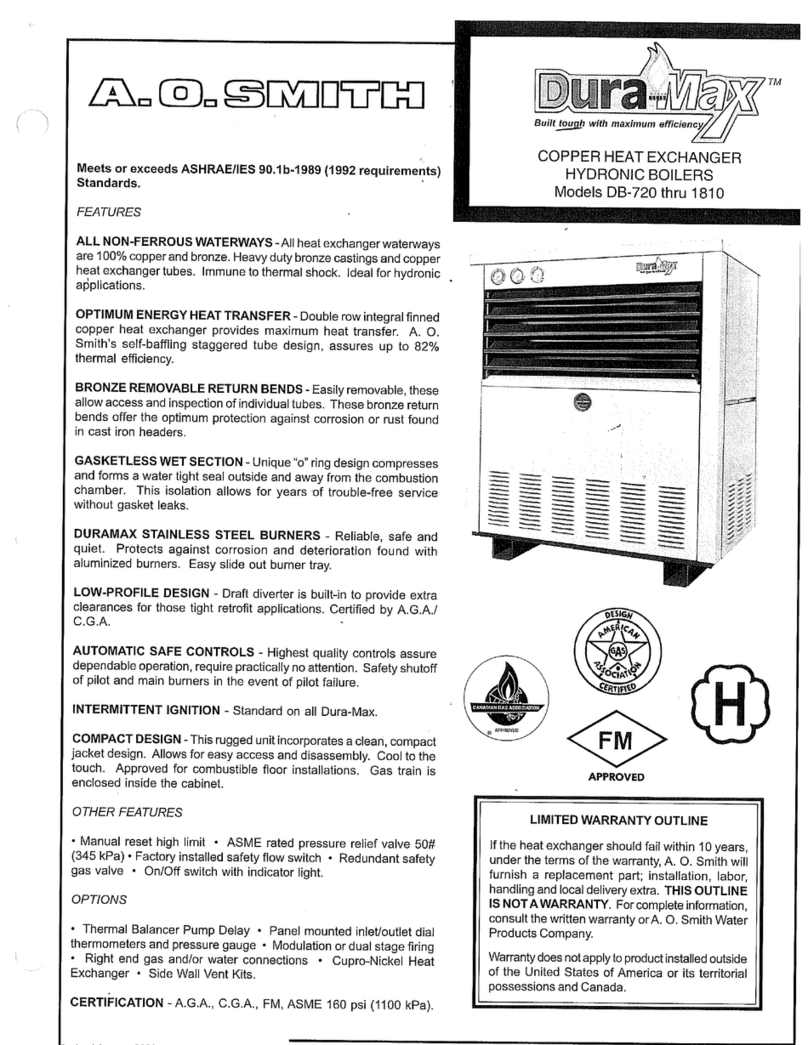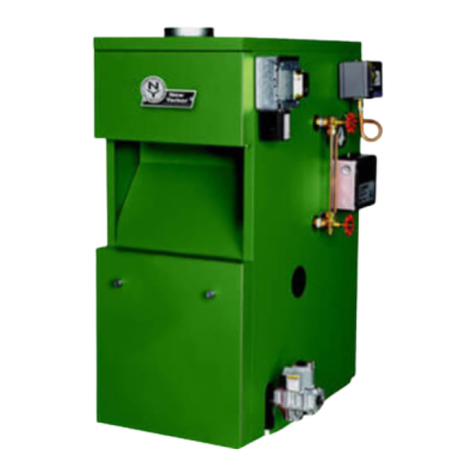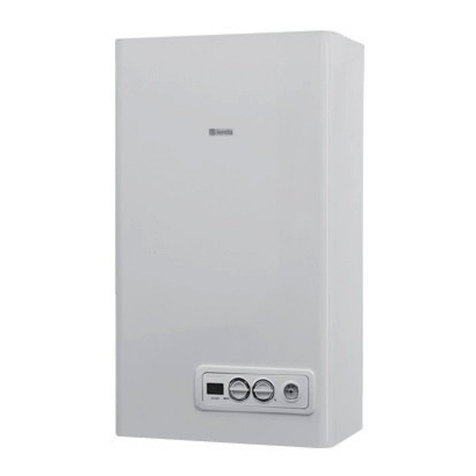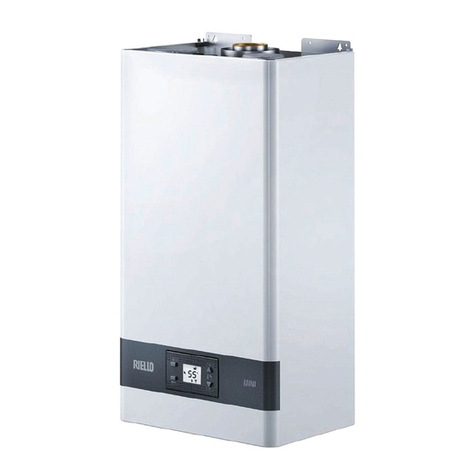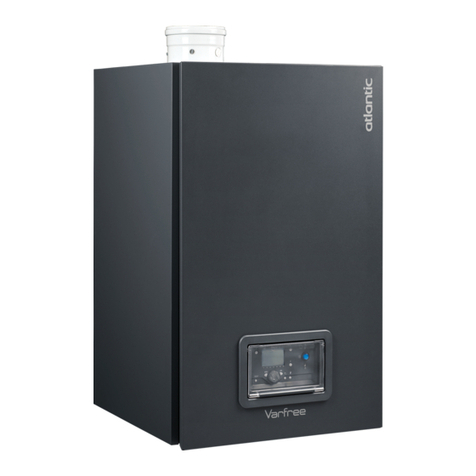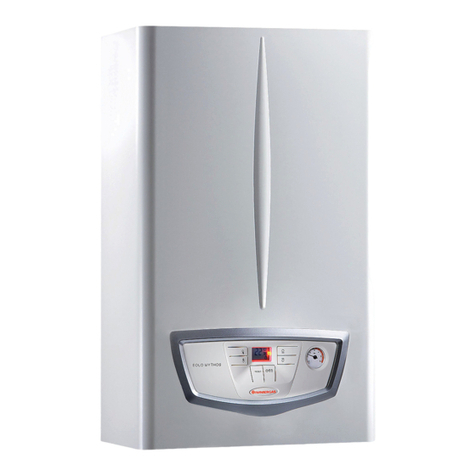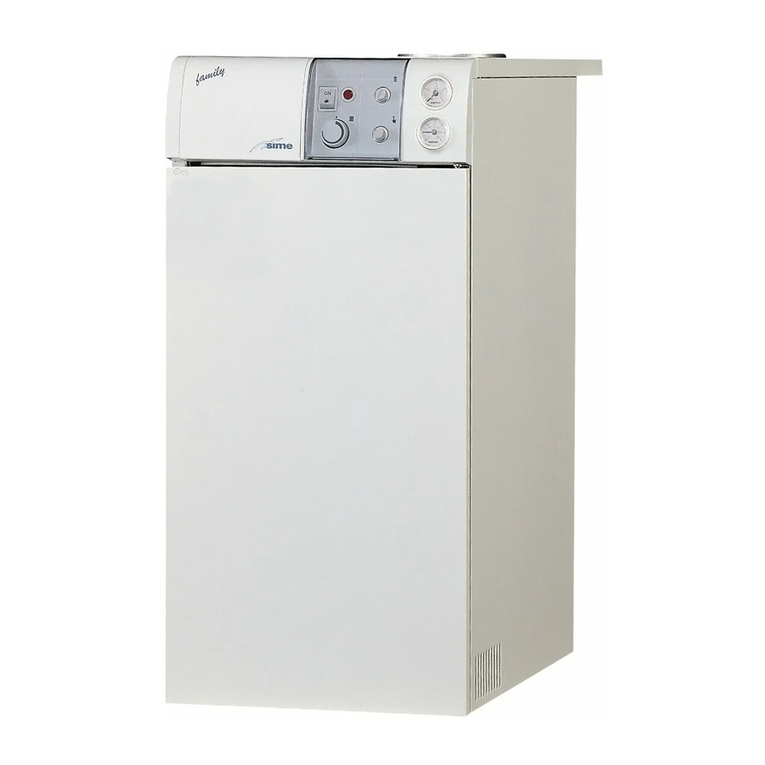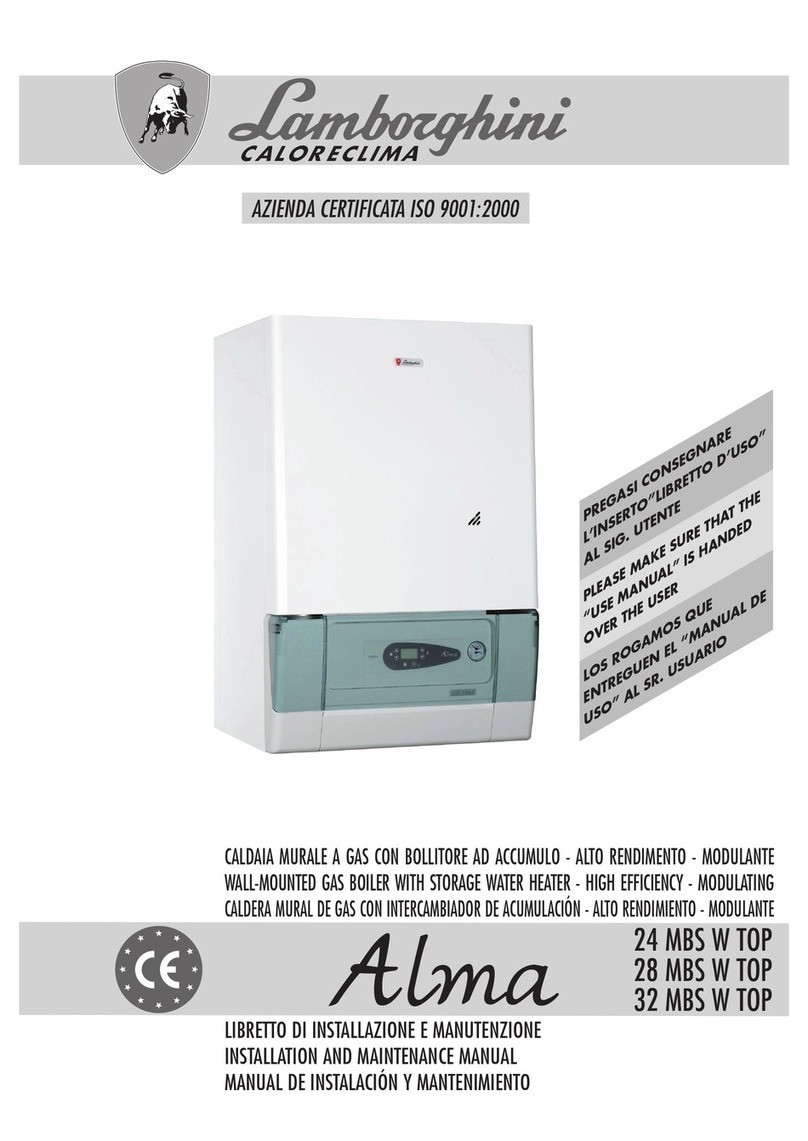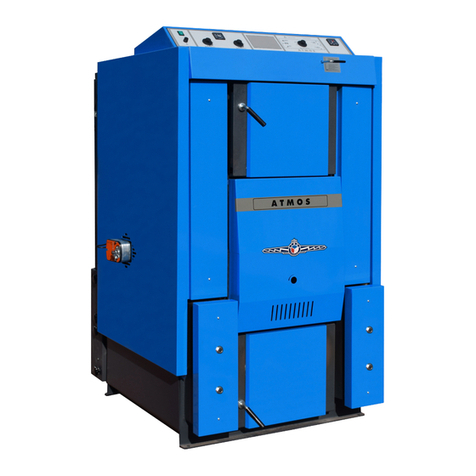User Operating Instructions for HE32 4/4
Adjustment of CH supply temperature & Domestic hot
water temperature
Press the Temperature button (B) for approx 2 secs until the LED CH
and the display start to flash (the display shows the set temperature).
Change the temperature using the “+” and “-“ buttons, adjustable
between 30ºC and 90ºC.
Press the Temperature button (B) again to select domestic HW (the LED
HW and display flash; the display shows the set temperature). Change
the temperature using the “+” and “-“ buttons, adjustable between 40ºC
and 65ºC.
Press the Reset button to store the changes (or press the On/Off button
to close the menu without storing the changes).
Note: After 30 seconds of no action, the changes will automatically be
stored and the controller will return to normal.
Note: If an OpenTherm thermostat is used, or if weather dependent
control is used, the CH setting must not be adjusted manually.
Commissioning
The appliance should be installed and commissioned by an authorised
installer. Check the following:-
Never connect the appliance to the mains voltage without filling and
de-aerating the appliance, CH system and hot water system.
1. Confirm that the appliance and system have been filled and de-
aerated. The water pressure in the CH system should be minimum
1 bar and maximum 2 bar for a cold system (by reading the CH
pressure gauge on the display; see 9 in the diagram).
2. Check that the electrical supply is switched on and the gas supply
is on.
3. Set the room thermostat lower than the room temperature.
Assuming that the appliance is switched off (horizontal mark on the
service display and remaining functions are off), switch on the
appliance with the on/off button on the display. If the domestic hot
water Keep hot function is switched to “on” or “eco”, the appliance
will heat up the heat exchanger automatically (3, 4, 7 on the service
display).
4. Set the room thermostat higher than the room temperature. The
appliance will start CH operation (5 on the service display), heating
the CH supply water to the set temperature (see CH operation).
Solar Hot Water System
The InterCombi can be used with an Atmos solar hot water system to
provide pre-heated water to the appliance. The temperature of the
domestic hot water should not be set below 60°C.
Frost protection
In order to avoid freezing of the condensate discharge pipe, the appliance
should be installed in a frost-free room. In order to avoid freezing of the
appliance (heat exchanger), it has an appliance frost protection. When the
temperature of the heat exchanger drops to 5ºC, the burner will be
activated and the pump will start running until the temperature of the heat
exchanger reaches 10ºC. When the system (or a part of it) can freeze, a
frost thermostat should be installed in the area to be protected. Connect
this according to the wiring diagram (see also the Installation instructions).
Note!
The external frost thermostat is not active when the appliance has been
switched off at the operating panel or when the mains voltage has been
interrupted.
Faults
If one of the following simple faults occur, they may be remedied as
follows. In case of recurrence, or other faults, please contact your
installer.
The CH System does not reach the correct temperature:-
•Increase the temperature on the room thermostat.
•Open the radiator valves.
•Increase the CH water temperature by means of the Temperature
button (B) and the + and – button on the display (see Adjustment).
•De-aerate the appliance and the radiators and check the pressure
gauge on the display is between 1 and 2 bar (for a cold system).
The hot water does not heat up:-
•Open up the hot water tap further.
•Increase the hot water temperature by means of the Temperature
button (B) and the + and – button on the display (see Adjustment).
The fault LED above the Reset button flashes on and the
Temperature display shows fault code 1:-
The boiler is getting too hot, due to insufficient circulation.
•Open the radiators, de-aerate the appliance and installation and
check the CH water pressure. Fill up if necessary.
After remedying the cause, press the Reset button for 5 secs and the
appliance will start-up again.
Filling and de-aerating the appliance and installation
Note: Switch off the electrical supply to the appliance until this has been
completed.
CH-system:
In order to obtain a proper functioning CH system, the pressure should
be between 1 and 2 bar for a cold system. If the pressure is too low, the
installation has to be filled. Proceed as follows:-
Connect the filler loop (between the cold water inlet pipe and the CH
return pipe) and open the taps.
Fill the appliance and CH system with clean tap water.
De-aerate the appliance using the manual air vent (needs a vent key to
open) situated on the left hand on top of the appliance (or, alternatively, if
an automatic air vent has been fitted, check that the cap on top of the
valve is loosened).
De-aerate the installation using the manual air vents on the radiators
and/or a de-aerate valve in the pipes. Fill the appliance and CH system
up to a pressure between 1 and 2 bar for a cold system, and then close
the filler loop taps and disconnect the loop at one end. Check for any
leaks.
If filling is necessary more than a few times a year, please contact your
installer Note: The corrosion inhibitor will become diluted.
Note: The CH system is fitted with a 3 bar safety valve. If water is seen in
the smaller diameter pipe below the appliance, check that the CH
pressure is between 1 and 2 bar. If it is within the range and the safety
discharge still occurs, contact your installer.
Hot water supply:
De-aerate the system by opening a hot water tap. Keep the tap open
until all air has left the system. Check the pipes / connections for leaks.
System Shutdown
Drain the appliance and the system when the mains voltage
has been disconnected and there is a chance of freezing.
1. Drain the appliance using the drain tap.
2. Drain the system at the lowest point.
3. Close the main valve for the cold water supply to the boiler.
4. Drain the appliance by disconnecting the domestic hot water
connections underneath the appliance or opening hot water taps.
Servicing the appliance
The appliance, the installation, the flue discharge and air supply should
be serviced every year by a qualified Service Engineer. The appliance
can be cleaned with a damp cloth. Do not use an aggressive or abrasive
cleaner.




